Program design
Explore ways in which large applications need to be broken down into modules, and specific algorithms need to be designed for each process. Learn ways algorithms can be expressed in a variety of ways. A flowchart is a useful visual technique to show the flow of logic through a program. Pseudocode is useful when the design will be passed to a programmer who can convert the pseudocode into real program code.
Additional details
| Year band(s) | 9-10 |
|---|---|
| Content type | Professional learning, Article or research |
| Format | Web page |
| Core and overarching concepts | Algorithms, Implementation (programming), Design thinking |
| Australian Curriculum Digital Technologies code(s) |
AC9TDI10P05
Design algorithms involving logical operators and represent them as flowcharts and pseudocode
AC9TDI10P06
Validate algorithms and programs by comparing their output against a range of test cases
AC9TDI10K02
Represent documents online as content (text), structure (markup) and presentation (styling) and explain why such representations are important |
| Technologies & Programming Languages | Webpage design |
| Keywords | Graphical User Interface (GUI), modular design, validation, verification, tecaher background information |
| Organisation | University of Cambridge and Raspberry Pi Foundation |
| Copyright | © University of Cambridge and Raspberry Pi Foundation. Creative Commons BY-NC-SA 4.0. |
Related resources
-
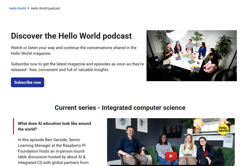
Discover the Hello World podcast
Watch or listen your way and continue the conversations shared in relation to tecahing and learning about Digital Technologies.
-
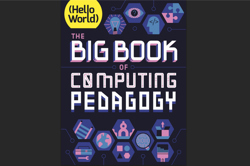
The Big Book of Computing Pedagogy
This guide focuses on approaches to teaching computing in the classroom, and includes pedagogically themed articles. It is structured around twelve pedagogical principles, originally developed by the Raspberry Pi Foundation for the National Centre for Computing Education in England.
-
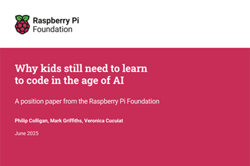
Why kids still need to learn to code in the age of AI
This report put forward evidence that even in a world where AI can generate code, we will need skilled human programmers who can think critically, solve problems, and make ethical decisions. It puts the case forward that young people need to learn to code because it is the most effective way for them to develop the mental models and fluency to become skilled human programmers.
-
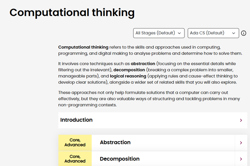
Computational thinking
This comprehensive online guide, provides a background to computational thinking which refers to the skills and approaches used in computing, programming, and digital solutions to analyse problems and determine how to solve them.
-
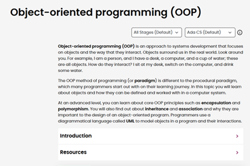
Object-oriented programming (OOP)
This comprehensive online guide, explores ways the OOP method of programming (or paradigm) is different to the procedural paradigm, which many programmers start out with on their learning journey. This topic introduces objects and how they can be defined and worked with in a computer system.
-
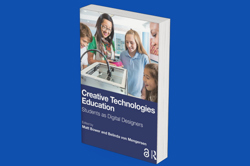
Creative Technologies Education
An open access book by 45 ATTEN academics that offers research-based strategies for teaching creative technologies with students as digital designers.
-

GenAI readiness and implementation modules
As generative AI (GenAI) becomes an increasingly important tool in education, it's essential for teachers to understand both its potential and its limitations. This two-module offering equips teachers with the knowledge and practical skills to use GenAI tools like Copilot effectively in the classroom. Teachers will enhance their own digital literacy while learning how to guide students in using AI responsibly and thoughtfully. By focusing on teacher readiness and practical classroom strategies, the modules support the development of students who can navigate AI in both classroom and everyday contexts. The modules were developed in collaboration with Microsoft.
